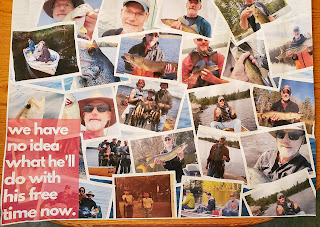Conference Blast-Off
Day 3 of my stay in San Diego for the 2011 ESRI Users Conference. All day yesterday was the Plenary session and at night was the map gallery social. It was a full day of rah-rah, all of it good albeit 6-9 months away from being released (ArcGIS v. 10.1). There were several impressive demos given of product enhancements that are groundbreaking.
A few things about these kinds of conferences are:
1. Many of the changes are head knockers in that what they sometimes show is stuff that should have been in the product two releases ago. You get so frustrated waiting for it, then it comes out and you naturally applaud, because you're so befuddled with how it was never there in the first place. That's the nature of software I'm afraid. but it's funny to see how grateful people are to have something so boldly apparent for so long.
2. So often the promise of new releases is refreshing, until you get the product unwrapped, installed and it's buggy. 80% of the stuff works, but you still get the application crash every two weeks or so, usually in the middle of working on something you hadn't saved in the last 30 min. Again, the nature of software, no doubt, but the more you come to these and "drink the Kool-Aid," the more cynical and cautiously optimistic you get about anything that purports to "shave 30 minutes off you're workday." Sometimes that 30 minutes is negated by the 45 minute work-around to do what you used to do in 25.
3. I imagine it's the same thing at the Apple new product roll outs introducing the latest cool app, tablet, phone or laptop. The iPhone (v. 4) is a good example. It came out and it was "ooh, ahh" and then the whole antenna problem surfaced and people were shocked. Well, the rule in any technology is wait a month or two, or better yet a full Service Pack cycle before you adopt a new technology. It'll save you grief every time.
4. The afternoon plenary session yesterday was captivating in that there were three recognitions that were amazingly positive and uplifting. In one a magnet school in Los Angeles did work with middle schoolers on mapping pollutant travels through drainage channels using GIS. It is so cool to see kids using this with enthusiasm, in the interest of changing the world.
Second was a couple who were working in Rwanda with the 500,000 coffee farmers in the area to grow "specialty coffee" for places like Starbucks, etc. This took place after the genocide in 1994 and has grown these farmers income from $500/mo to $3000/mo over a 10 year period. GIS was used to analyze soil, temperature, and other factors. A perfect application for GIS technology.
Finally was a woman talking about global warming and outlining her work with the European Environment Institute to curb it using international monitoring and accountability. GIS was at the core of their research. Again, great change potential, showing both promise and the urgency that we need to take action on things re: carbon footprints, etc.
So, I'm jazzed about GIS and all it can do to make the world a better place. Like every year, the important thing is to carry this enthusiasm back and put it to work on my little niche of the world. I guess that's all you can do. Think global, act local.
Gotta run to my first session. What a great conference, in a great City!
Blogging off...



Comments